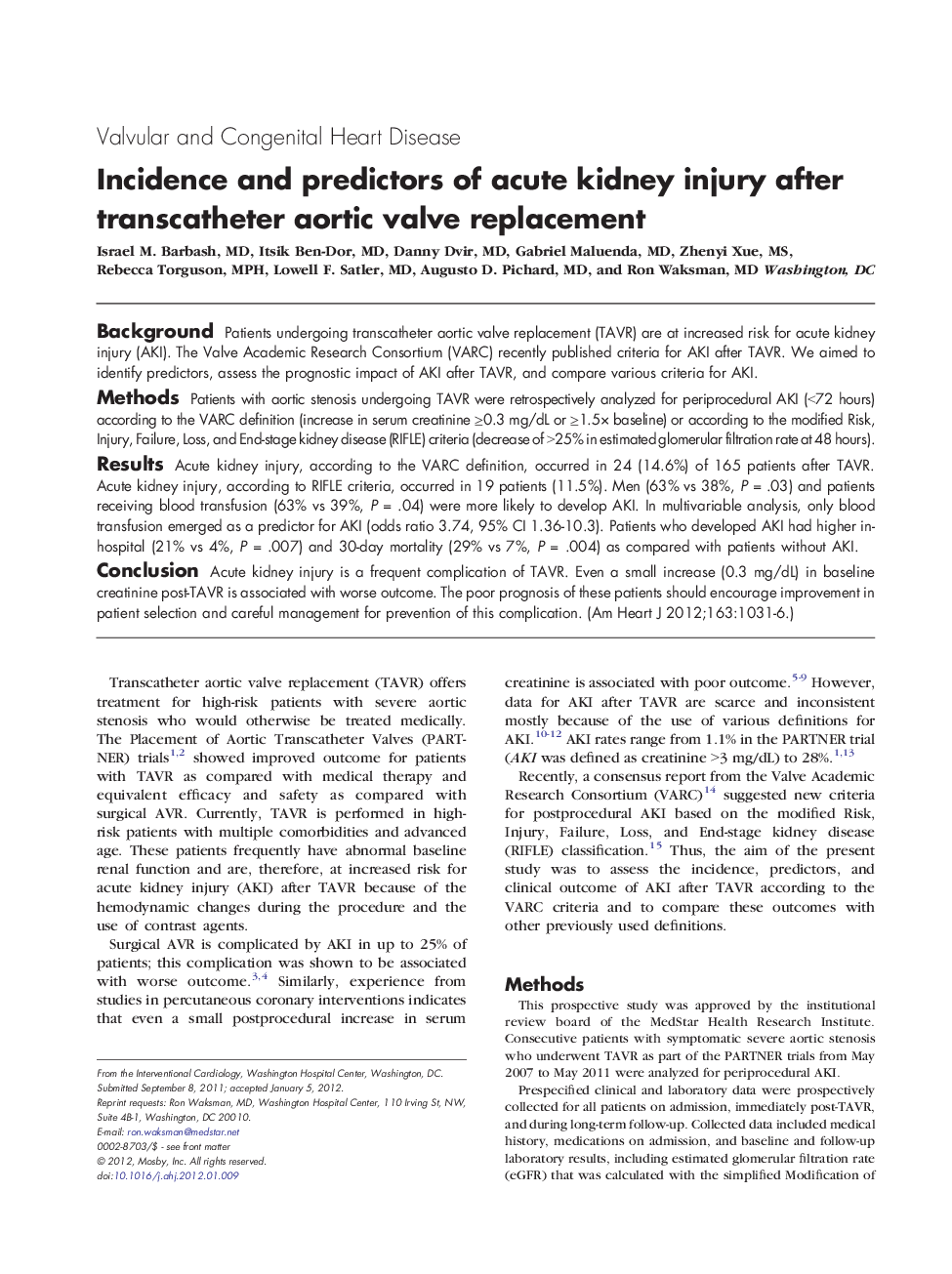| Article ID | Journal | Published Year | Pages | File Type |
|---|---|---|---|---|
| 2849524 | American Heart Journal | 2012 | 6 Pages |
BackgroundPatients undergoing transcatheter aortic valve replacement (TAVR) are at increased risk for acute kidney injury (AKI). The Valve Academic Research Consortium (VARC) recently published criteria for AKI after TAVR. We aimed to identify predictors, assess the prognostic impact of AKI after TAVR, and compare various criteria for AKI.MethodsPatients with aortic stenosis undergoing TAVR were retrospectively analyzed for periprocedural AKI (<72 hours) according to the VARC definition (increase in serum creatinine ≥0.3 mg/dL or ≥1.5× baseline) or according to the modified Risk, Injury, Failure, Loss, and End-stage kidney disease (RIFLE) criteria (decrease of >25% in estimated glomerular filtration rate at 48 hours).ResultsAcute kidney injury, according to the VARC definition, occurred in 24 (14.6%) of 165 patients after TAVR. Acute kidney injury, according to RIFLE criteria, occurred in 19 patients (11.5%). Men (63% vs 38%, P = .03) and patients receiving blood transfusion (63% vs 39%, P = .04) were more likely to develop AKI. In multivariable analysis, only blood transfusion emerged as a predictor for AKI (odds ratio 3.74, 95% CI 1.36-10.3). Patients who developed AKI had higher in-hospital (21% vs 4%, P = .007) and 30-day mortality (29% vs 7%, P = .004) as compared with patients without AKI.ConclusionAcute kidney injury is a frequent complication of TAVR. Even a small increase (0.3 mg/dL) in baseline creatinine post-TAVR is associated with worse outcome. The poor prognosis of these patients should encourage improvement in patient selection and careful management for prevention of this complication.
